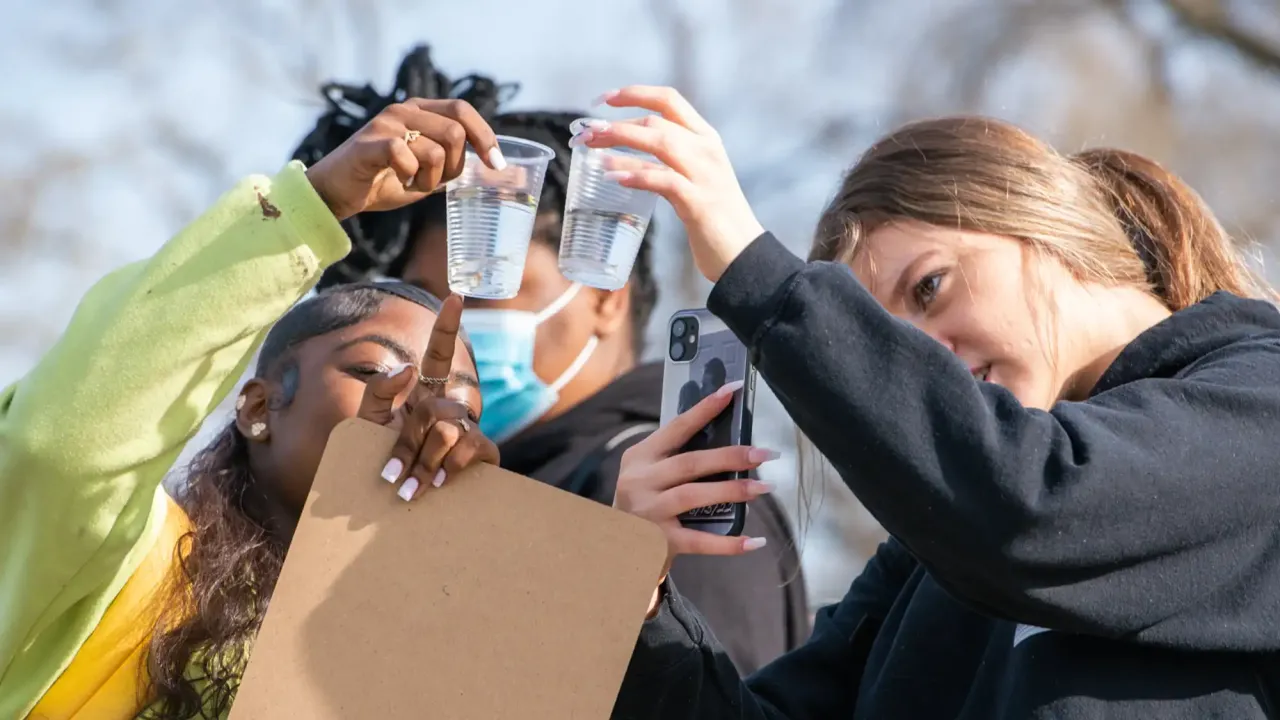In addition to predators, river diversions, and reduced spawning grounds, California salmon now face a new challenge: Thiamine Deficiency Complex, or TDC, a nutritional deficiency that leads to neurological problems and early death. Thankfully, more than 3,000 high school students offer a way forward in tackling this urgent issue.
As research assistants in a nationwide study — created in collaboration with experts from the UC Davis Center for Community and Citizen Science and the Center for Watershed Sciences — the high schoolers worked with scholars from 2020 to 2025 to collect the data needed to determine the cause of rising TDC rates. Together, they monitored hundreds of spawning salmon for early signs of thiamine deficiency, most notably, swimming in spinning patterns.
Researchers published the final study in July 2025, identifying anchovy-dominated diets as the cause of TDC. With a recent and ongoing decline in oceanic biodiversity, salmon are primarily consuming anchovies, resulting in critically lower thiamine concentrations in their systems.
The high schoolers’ data collection helped advance efforts to protect local salmon, bringing fresh insight to an urgent conservation challenge that’s already impacting the students’ own communities. The project may have ended, but their contributions will continue to serve as a model for building more equitable research projects that encourage everyone to lend a hand.
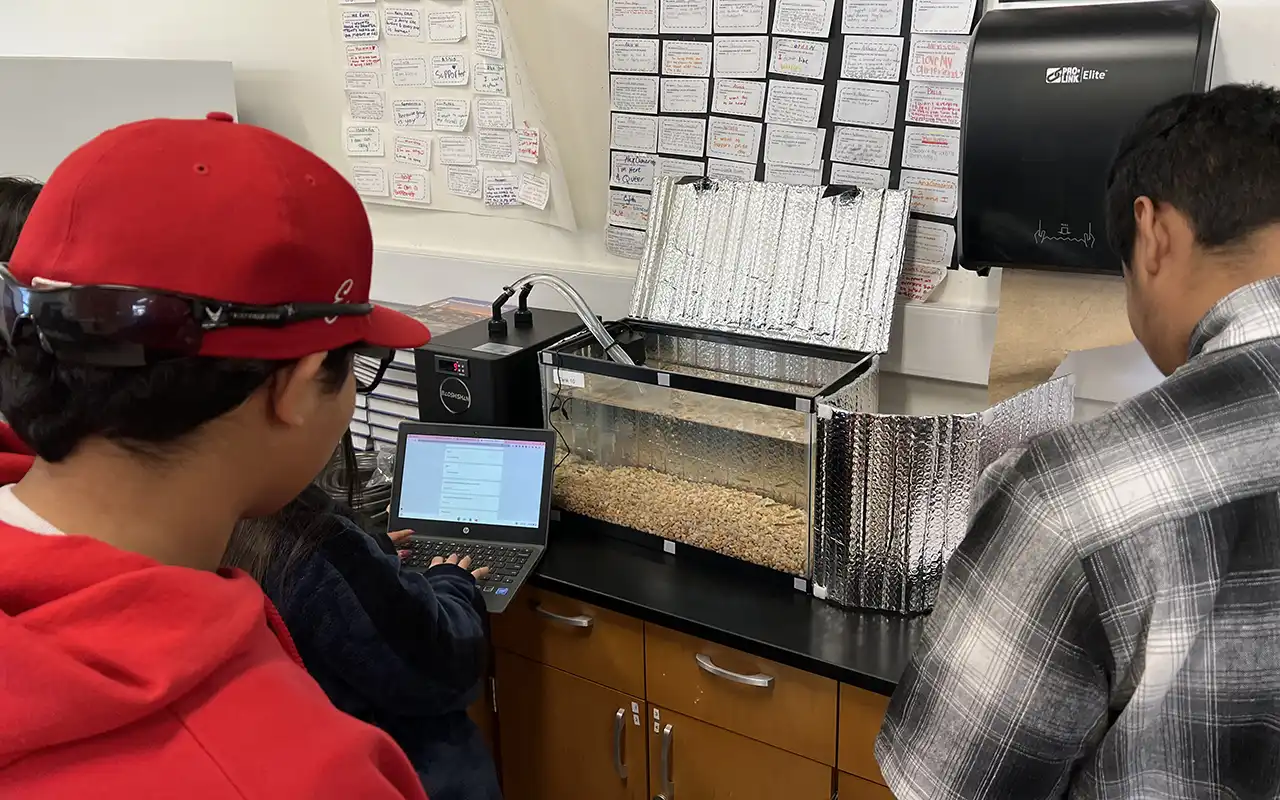
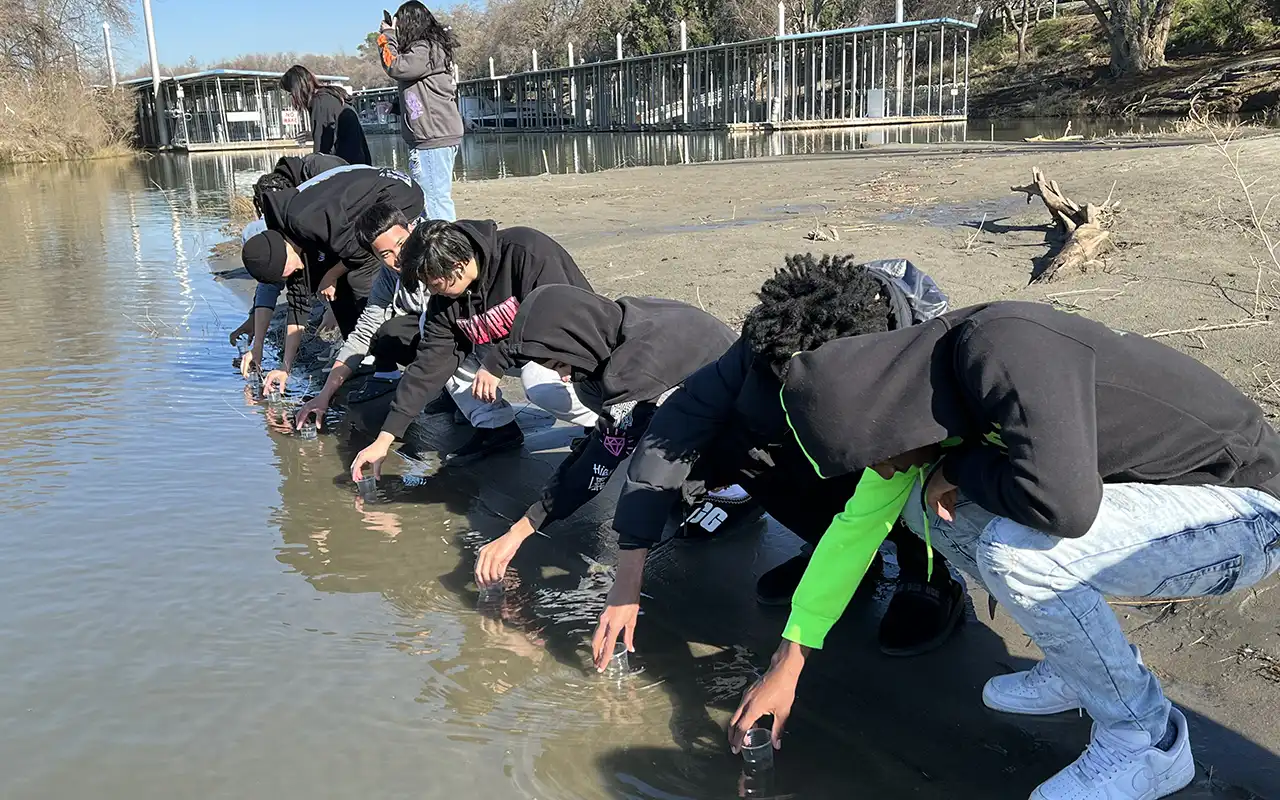
“Involving K-12 students in field research is a powerful way to promote learning across many disciplines,” said Peggy Harte, program co-lead and Youth Education Program Manager for the Center for Community and Citizen Science, which is housed at the UC Davis School of Education. “This format allows students to engage with real-world problems and contribute to the solution. It makes science accessible and inclusive for everyone, especially since we need collective action — not just STEM professionals — to solve global problems.”
Reimagining K-12 STEM Education Through the Spinning Salmon Program
Thiamine Deficiency Complex was first observed in California in 2020, when researchers at the Department of Fish and Wildlife Fish Health Laboratory and the UC Davis Aquatic Animal Health Laboratory noted that young salmon in fish hatcheries were dying at unusually high rates. To uncover TDC’s cause, they launched a partnership with scientists across the country, including the UC Davis Center for Watershed Sciences and National Oceanic and Atmospheric Administration, to research the growing problem.
The newly formed TDC team recognized that building a comprehensive dataset on spawning salmon would require a large team of assistants. Coincidentally, one Yolo County elementary school teacher had reached out to Carson Jeffres, Center for Watershed Sciences field and lab director, about a problem she and her students had been observing in their classroom fish tank. The class had been participating in the Classroom Aquarium Education Program and noticed that the salmon in their fish tank were swimming in circles. Jeffres realized that the program’s design could be replicated to meet the TDC team’s data needs. By providing classrooms with fish tanks filled with salmon eggs, the researchers could quickly collect enough data to understand what was happening to local salmon populations.
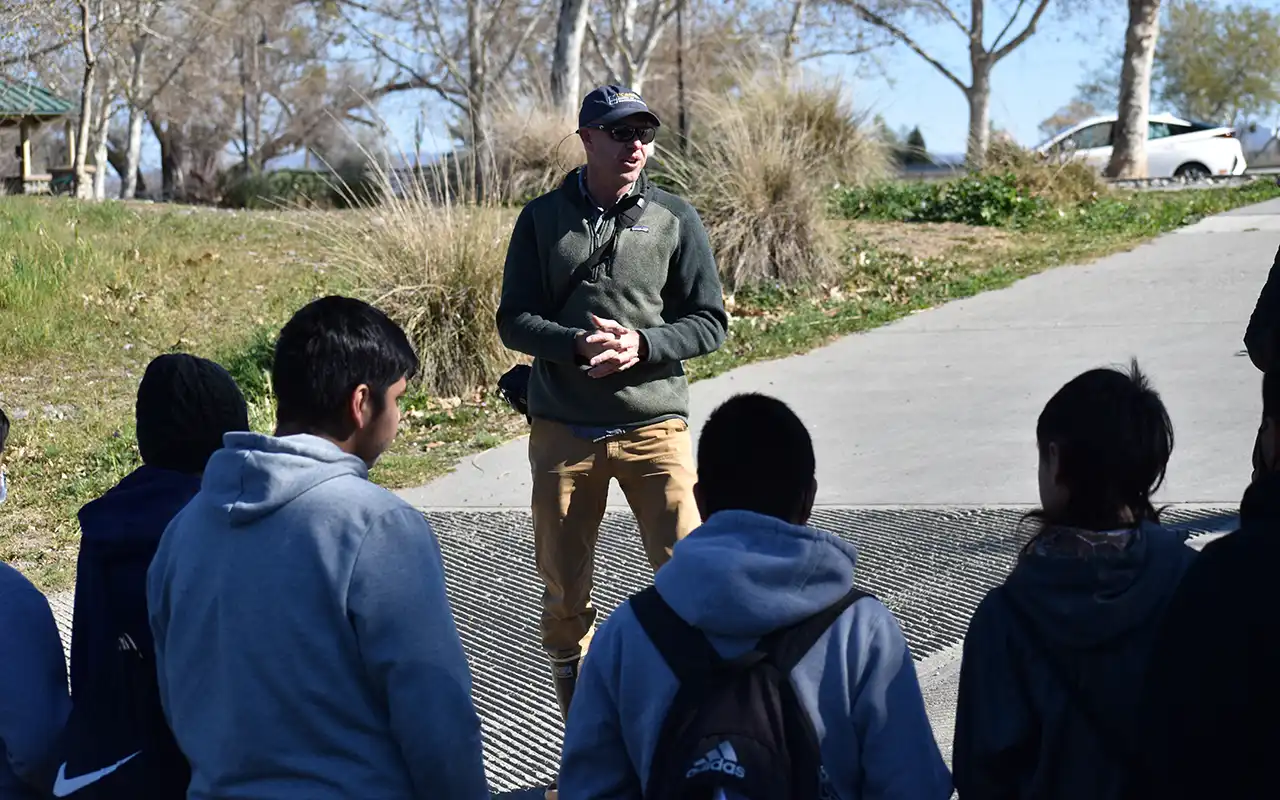
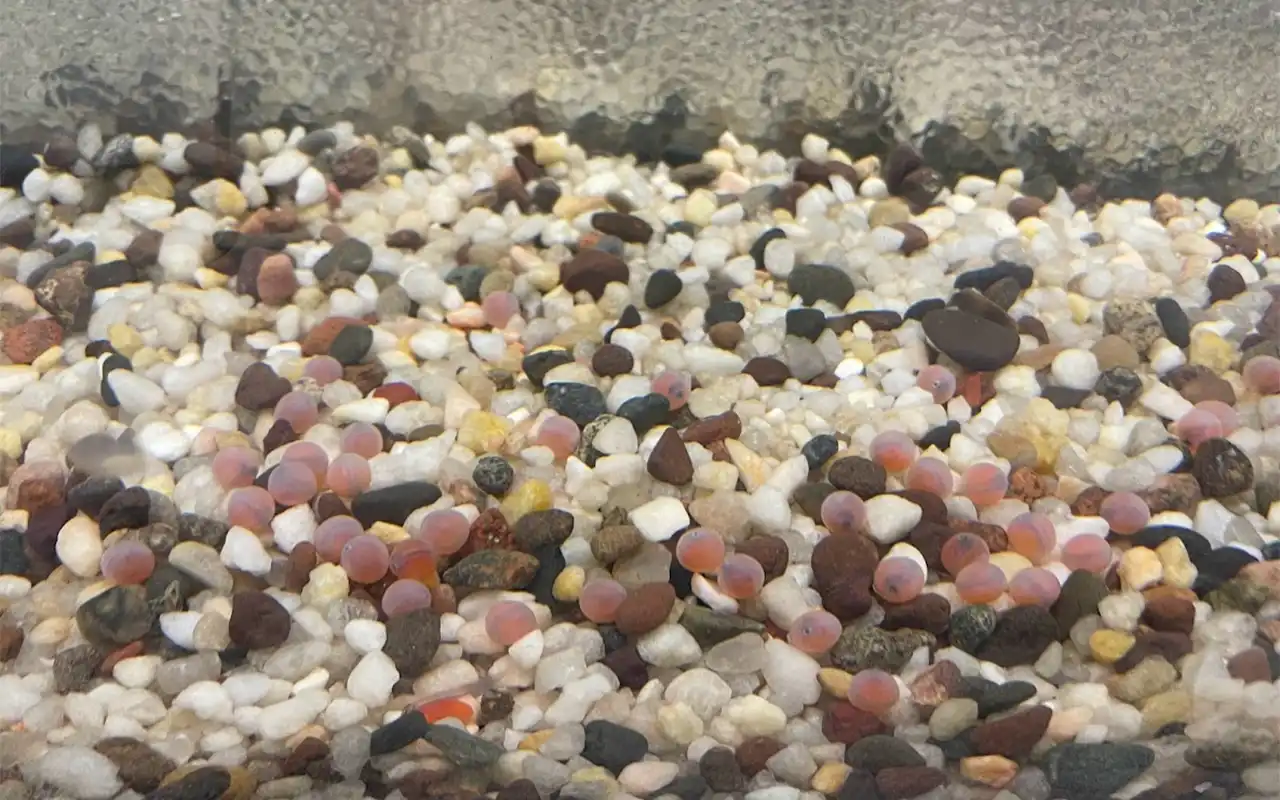
In need of lesson plans and a research protocol to onboard student participants, Jeffres approached Harte and the UC Davis School of Education’s Center for Community and Citizen Science to develop a curriculum that would guide high schoolers through the data collection process. Participating classrooms across Sacramento, Solano, Glenn, Tehama, and Colusa counties received fish tanks with 30 to 35 fall-run Chinook salmon eggs from the Feather River Fish Hatchery, which they would observe until the fish reached adolescence. They would then release the fish into the local watershed while they were still in early life stages.
University-Community Collaboration Sparks Student Research in Rural Schools
GEAR UP STEM Rural Valley Partnership provided the support, resources, and guidance needed to launch students’ data collection. A federally funded program of the UC Davis School of Education that seeks to increase the number of young people who are prepared to enter and succeed in postsecondary education, GEAR UP had already been collaborating with the Center for Community and Citizen Science to increase inclusive science education opportunities and engagement among students in rural Northern California. When Jeffres approached the center about launching a study in 2020, Harte and GEAR UP Executive Director Stacey Garrett saw an opportunity to deepen their students’ interest in science and STEM careers through student-centered data collection.
Garrett encouraged GEAR UP’s partner school districts to adopt the Spinning Salmon Program. Together, she, Harte, and the GEAR UP advisors onboarded the first cohort — and all subsequent classes — of students in Glenn, Colusa, and Tehama counties. In addition to regular classroom activities, GEAR UP also funded a range of enrichment experiences, including virtual Q&A sessions, guest speaker series, and field trips.
“When COVID-19 shifted how we ran GEAR UP in the schools, Spinning Salmon offered a way forward,” said Jared Beldon, GEAR UP program advisor. “We could keep our students thinking about college while still staying engaged in the material — even if it was on their Zoom screens. But the best part was that we all became a part of this national research project. I couldn’t believe that students, teachers, and GEAR UP advisors from rural Red Bluff, California, were sending new findings to researchers solving a global problem.”
Participatory Science Engages All Kinds of Learners
As GEAR UP brought in students and teachers to participate in the Spinning Salmon Program, Harte noted a major opportunity to make their study even more inclusive to science learners. A NOAA Bay Watershed Education and Training grant awarded to the Solano County Office of Education in the study’s second year (2022) expanded the team and adapted the Spinning Salmon Program for Solano continuation high schools and juvenile detention centers.
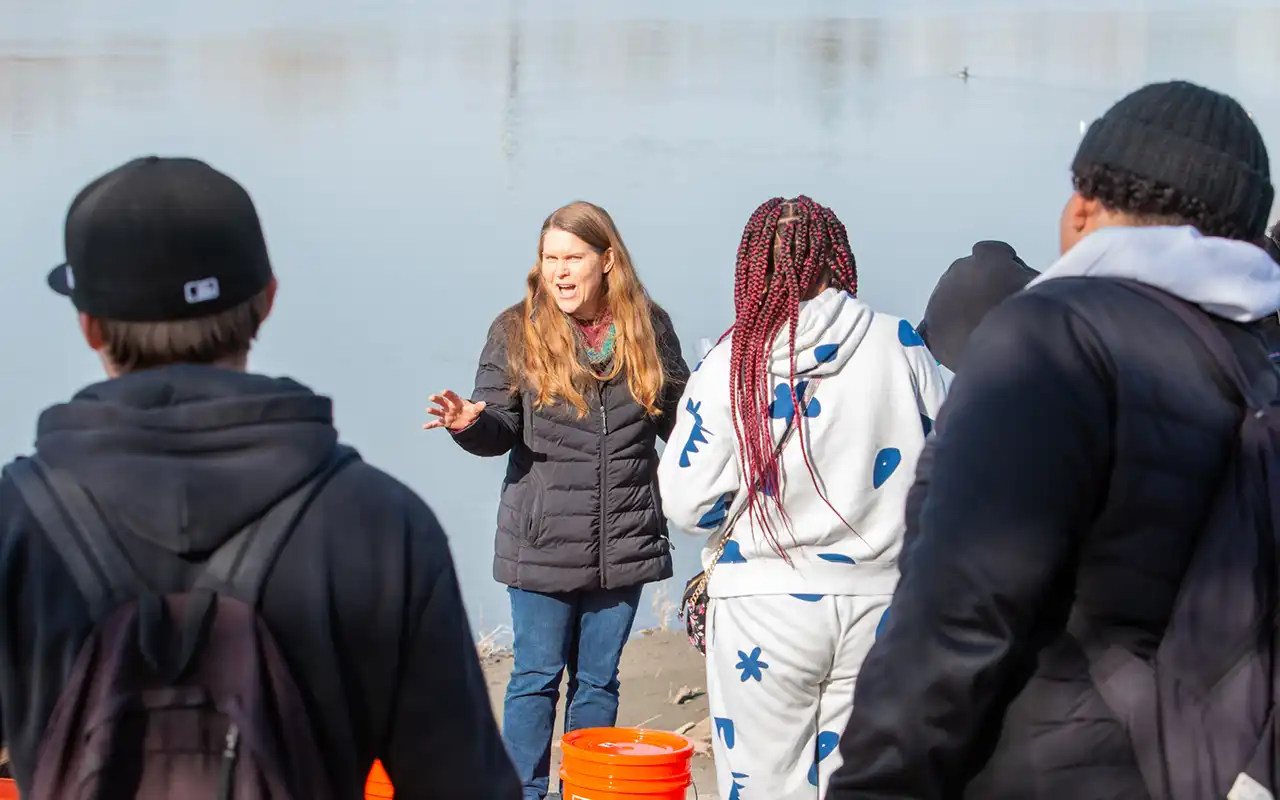
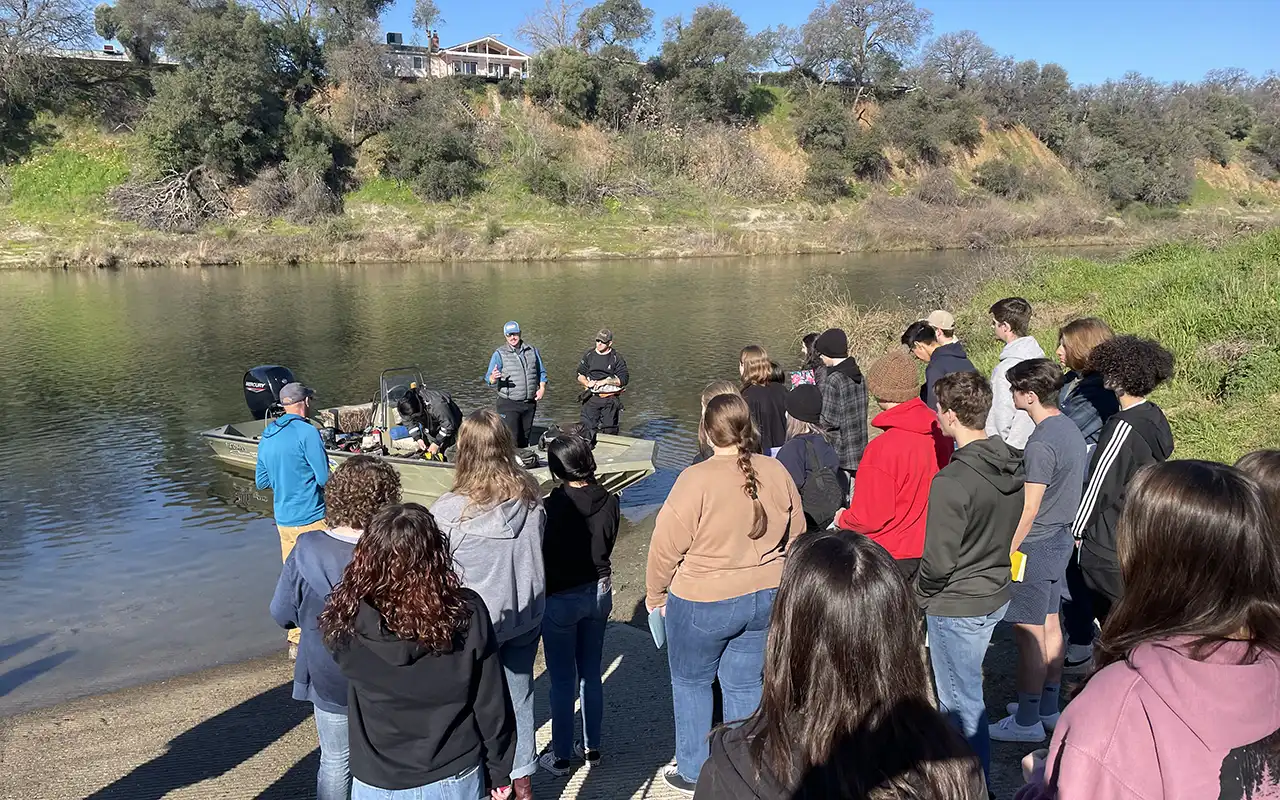
“I kept asking myself ‘What does universal access actually mean when you’re conducting participatory science and need to ensure accurate data?’” said Harte. “These student populations are an important piece of that puzzle, and the results we saw were incredible. For many of those students, it was the first time they wanted to do extended research on their own. They didn’t want to miss class.”
This Solano County partnership also enabled the Spinning Salmon Program team to bring their research protocol and lesson plans to the Office of Education’s Deaf and Hard of Hearing Program. “Regardless of the barriers and severe language deprivation my students have faced,” said Carly Davis, a teacher of the program, “projects like the Spinning Salmon Program bridge my students’ academic and language gaps, building their resilience and sense of representation.”
A Space for Students to Educate and Lead
As the TDC team and student participants entered the final phases of the research study in early 2025, Harte, Jeffres, and Rachel Johnson — senior researcher at the National Oceanic and Atmospheric Administration — brainstormed ways to deepen the high schoolers’ understanding of and agency in the final research. They hosted a student showcase in which students could share what they learned in May.
Becca VanArnam, a Ph.D. student in the UC Davis School of Education and graduate student researcher, leveraged the Community and Citizen Science in Conservation Fellowship she received to fund the showcase for Solano County students and teachers. “My primary goal was to create space for students to see themselves in science and this research — not just as participants, but leaders who can bring others in,” VanArnam said. “The showcase was one opportunity for them to share their work, communicate what matters to them, and demonstrate how inclusive, community-driven science can make an impact.”
To highlight the program’s interdisciplinary approach, the participants were encouraged to create presentations that brought together their salmon data with creative writing, art, or other humanities subjects. One class of Maine Prairie High School art students created a table-sized model of two papier-mâché salmon and fertilized eggs. The salmon were organized to reflect yin and yang, the Taoist symbol for complementary and opposing forces that work in harmony. The stripes and marks on the salmon’s bodies and the size of their eggs represented the observational data the students collected from their fish tank. “Our class kept asking, ‘how would you represent this?’” said art teacher Regina Richardson-Peterson. “That thought pushed us to think more deeply about the story behind our data.”
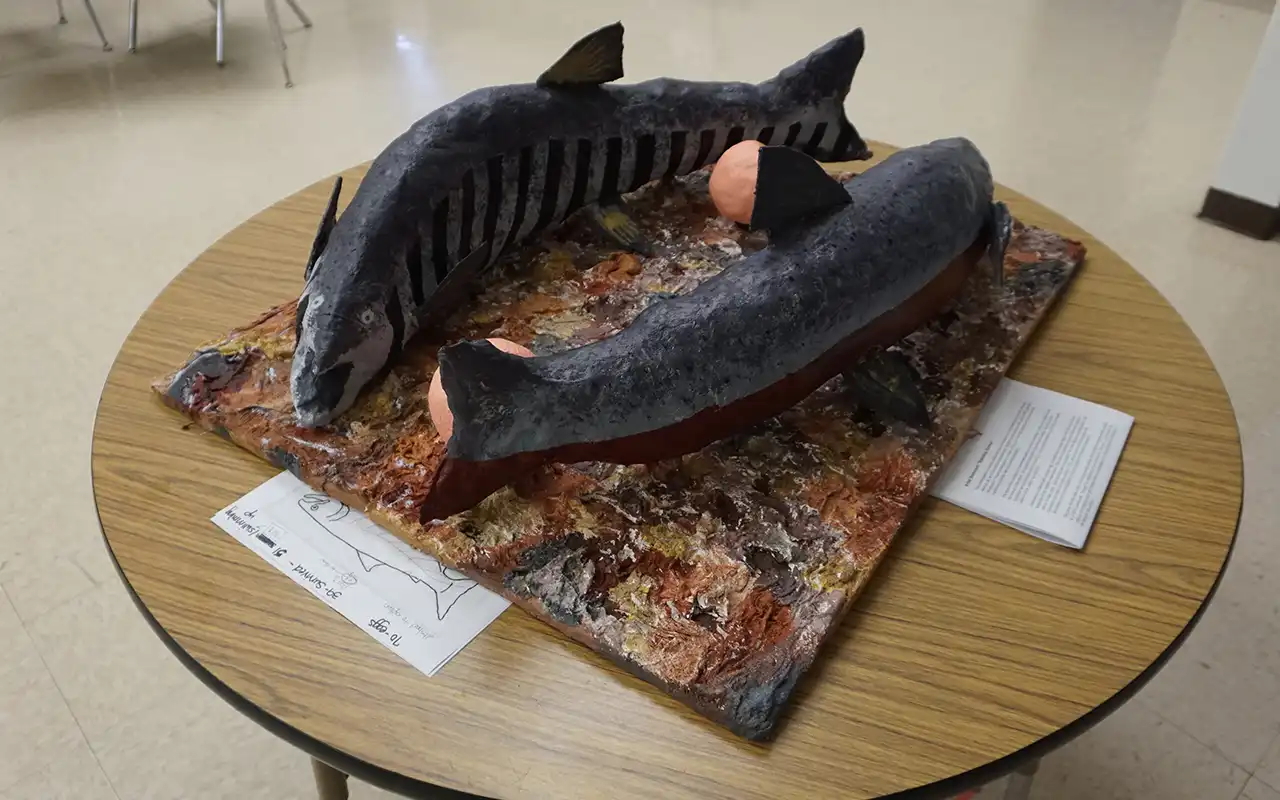
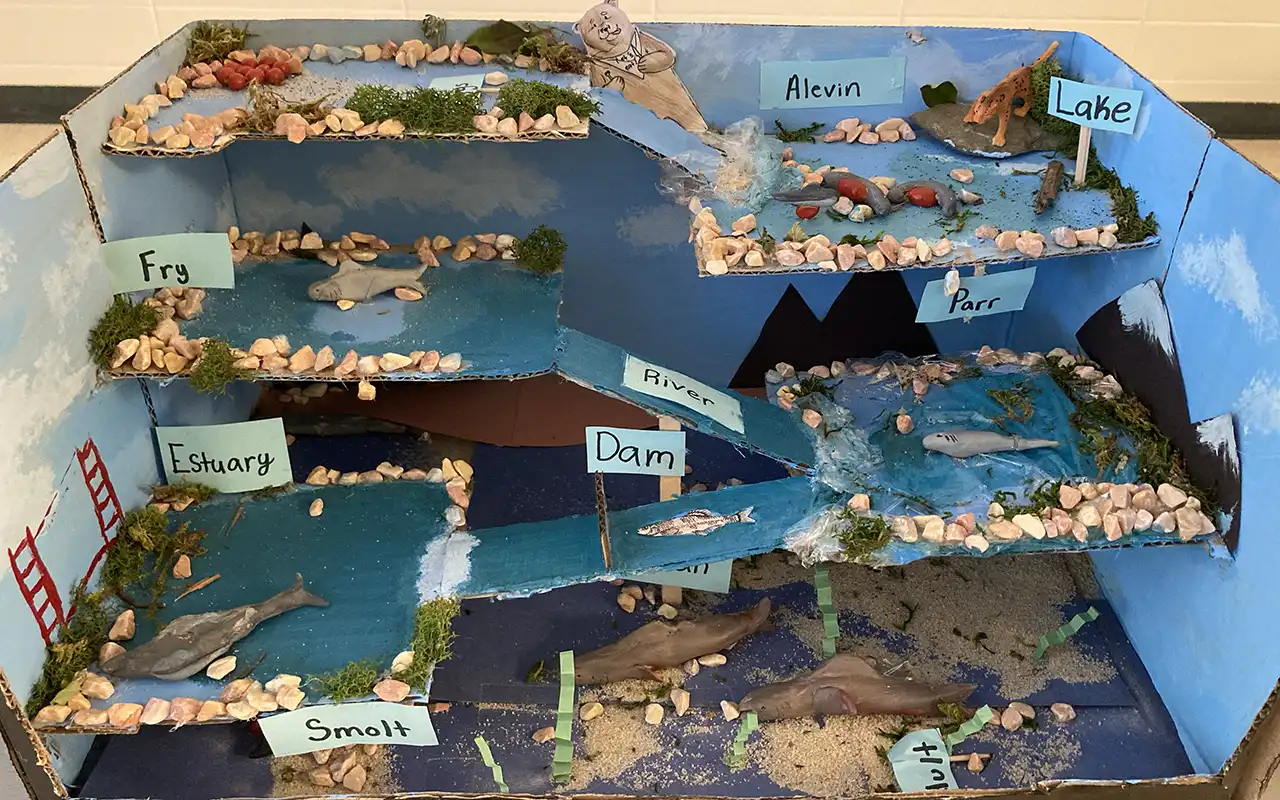
During the showcase, another student gave a presentation about his appreciation for fishing, an activity he and his grandfather used to do together. After his grandfather passed away, the student revisited their favorite fishing spot only to find it had become an inhospitable place for fish to populate. Participating in the Spinning Salmon Program inspired him to learn more about local sturgeon populations and the California Department of Fish and Wildlife regulations on recreational fishing.
“There have been a lot of ‘aha’ moments for our students who are now considering careers in science,” said Maine Prairie principal Angelina Arias.
From Student Researcher to Community Stakeholder
The Spinning Salmon Program provides an expansive and innovative answer to the question Who can do real science? As a youth-engaged research study, the project moves scientific inquiry beyond academia, situating high schoolers as legitimate participants in the scientific process and stakeholders in the final results. And they contributed skills and knowledge to solve a problem happening in their local communities.
Designing the Spinning Salmon Program as an interdisciplinary citizen science project made data collection more inclusive and accessible. The students, teachers, advisors, and many other contributors that Harte brought to the project didn’t need to know everything about salmon, just how to collect data using the tools and resources available to them. This model demonstrates the potential of future research studies seeking to understand climate-related challenges. With an equitable framework in place, research can be scaled to solve difficult questions — and still prioritize the community it’s seeking to understand.
“As researchers in a university, we rarely get the chance to go into a high school, talk about our work, and set up a whole project to include students,” said Jeffres. “Research shouldn’t work in a vacuum or only with researchers leading the charge. If we really want to have salmon in our future, it’s the young people who will have to make that happen. The Spinning Salmon Program is building that foundation for them.”
